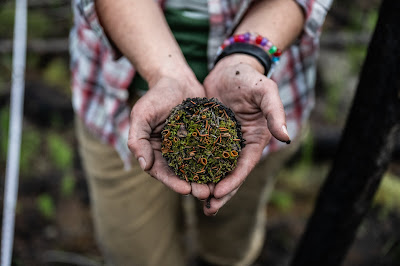As electricity demand from data centers soars, Meta and Google are looking at a novel solution: harnessing clean heat far below Earth’s surface.
Big tech companies across the United States are struggling to find enough clean energy to power all the data centers they plan to build.
Now, some firms are betting on a novel solution: harvesting the heat deep beneath the Earth’s surface to create emissions-free electricity, using drilling techniques from the oil and gas fracking boom.
On Monday, Meta, the company that owns Facebook, announced an agreement with a start-up called Sage Geosystems to develop up to 150 megawatts of an advanced type of geothermal energy that would help power the tech giant’s expanding array of data centers. That is roughly enough electricity to power 70,000 homes.
Sage will use fracking techniques similar to those that have helped extract vast amounts of oil and gas from shale rock. But rather than drill for fossil fuels, Sage plans to create fractures thousands of feet beneath the surface and pump water into them. The heat and pressure underground should heat the water to the point where it can be used to generate electricity in a turbine, all without the greenhouse gases that are causing global warming.
“It’s basically the same fracking technology,” said Cindy Taff, an oil industry veteran who worked at Shell for 36 years before becoming Sage’s chief executive. “The difference is that we’re going after clean heat instead of hydrocarbons” such as oil and gas.
Sage has already drilled a test well in South Texas to demonstrate its approach. The startup now aims to build its first large-scale power plant at a yet-to-be-determined location east of the Rocky Mountains, with the first phase coming online by 2027.
The deal is the latest sign of growing excitement for new types of geothermal power that could provide enormous amounts of emissions-free electricity around the clock and complement more variable sources like wind and solar power.
Google has partnered with Fervo Energy, a prominent geothermal start-up, to build a 5-megawatt pilot plant in Nevada that has already begun supplying power to the grid. The two companies recently reached a deal to supply much more geothermal power in the years ahead to Google’s data centers.
Fervo is also building a 400-megawatt plant in Utah that will sell electricity to utilities in Southern California and is expected to come online starting in 2026.
Tech firms are facing an urgent need for more electricity, as growing interest in artificial intelligence has triggered a data center boom. By one estimate, data centers could consume 9 percent of U.S. electricity by 2030, up from 4 percent today.
Data centers typically need power 24 hours a day, which wind turbines and solar panels alone can’t provide. At the same time, many technology companies have promised to reduce their planet-warming emissions and face pressure not to rely on fossil fuels like coal or gas. So they are exploring technologies that can run around the clock, like nuclear power or enhanced geothermal.
“We’re going to need every tool in the arsenal,” said Michelle Solomon, a senior policy analyst at Energy Innovation, a nonprofit organization. “In the near term, enhanced geothermal might play a relatively small role, but I feel very optimistic about where the technology is going.”
Geothermal power has been around for decades. But traditionally, geothermal plants were limited to places where companies could easily tap underground hot water reservoirs close to the surface. Only a few locations have the right geology for this, such as parts of California or Iceland, which is why geothermal currently provides just 0.4 percent of America’s electricity.
But everywhere on Earth contains enormous amounts of underground heat if one can drill down far enough, and dozens of startups are exploring techniques to unlock that heat in new locations. Although it can be expensive to drill thousands of feet deep into hot, dry rock, those costs are falling as companies gain experience. In February, Fervo said it had already reduced drilling times by up to 70 percent in just one year.
“We’re already way ahead of where people expected us to be, and we’re expecting more dramatic cost reductions in the future,” said Tim Latimer, Fervo’s chief executive.
The Energy Department estimates that geothermal could provide 90,000 megawatts of U.S. electric capacity by 2050 if technologies keep improving, a twentyfold increase from today.
“Geothermal has such enormous potential,” Energy Secretary Jennifer Granholm said in March.
Still, next-generation geothermal gets significantly less federal funding than other technologies like hydrogen fuels or nuclear power, in part because it has only recently emerged as a promising energy source. That means support from climate-conscious tech companies could be crucial as geothermal start-ups navigate the risks of getting early projects built.
Urvi Parekh, head of renewable energy at Meta, said the company wanted to signal ahead of time that it intended to buy electricity from Sage so that the start-up could raise funding and begin lining up equipment. “There’s a tremendous value to us making that commitment today,” Ms. Parekh said. “That way they can take the steps necessary to get that project that we want to see on the electricity grids.”
Brad Plumer is a Times reporter who covers technology and policy efforts to address global warming. More about Brad Plumer










































